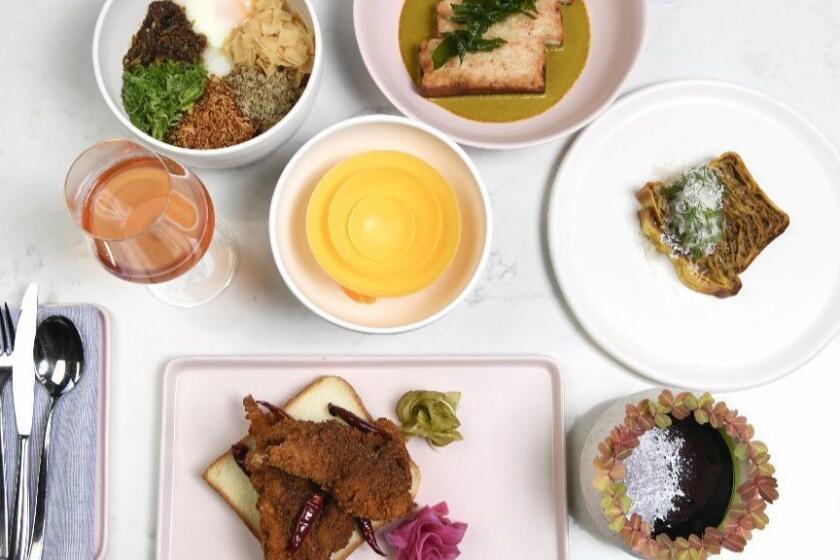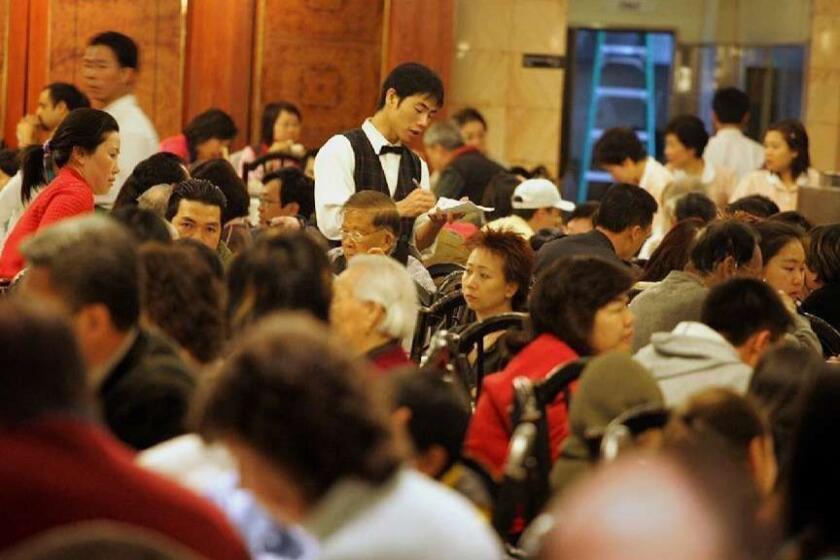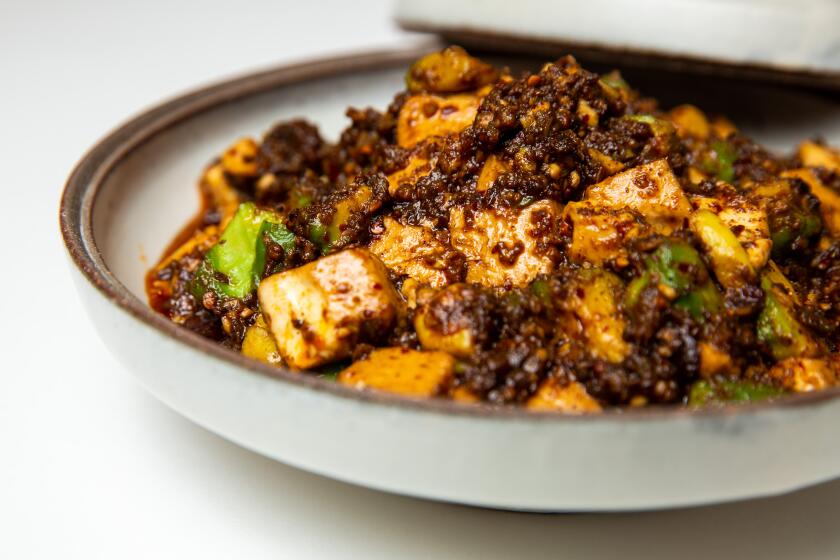Kung pao chicken’s legacy, from the Qing Dynasty to Panda Express

- Share via
The name of the 19th century Chinese official Ding Baozhen may be unfamiliar, but almost everyone has heard of his favorite dish: gong bao or kung pao chicken.
A stir-fry of cubed chicken and piquant chiles, it’s one of the few Chinese dishes whose name needs no translation.
More famous even than General Tso’s chicken, it appears on menus everywhere from Beijing banquets to Panda Express. Most Americans will, at one time or another, have opened a takeout carton in their living rooms to reveal those juicy chunks of chicken in a waft of chile fragrance. Donald Trump was served kung pao chicken on his state visit to China in 2017; Chinese astronauts eat the dish in space.
Yet although kung pao chicken is best known as a Sichuanese dish, its precise origins are hotly contested.
While the connection between General Tso’s chicken and its namesake, the Hunanese General Zuo Zongtang, is entirely invented, no one disputes that kung pao chicken is linked to Ding (1820-86), an eminent Qing Dynasty official known as Gong Bao (literally Palace Guardian) because of his honorary title of tutor to imperial princes.
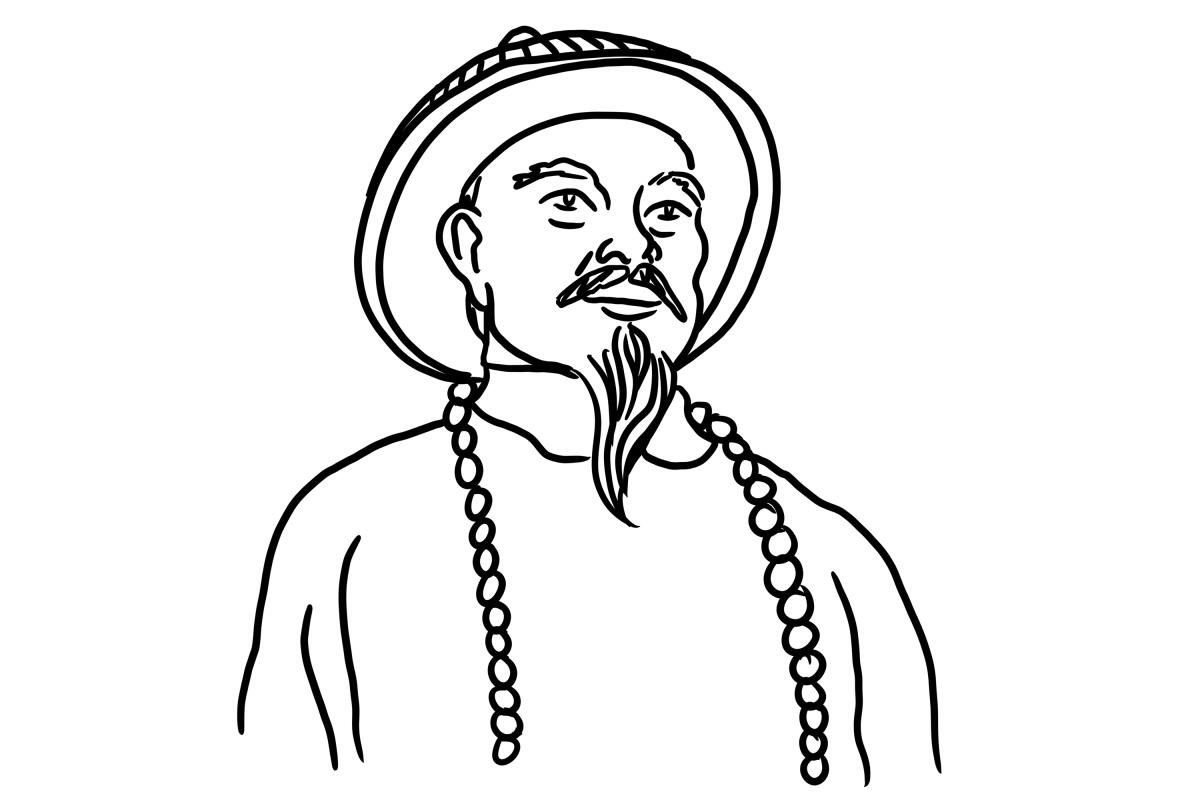
During an illustrious career, Ding made his mark in several parts of China: his home province of Guizhou, northeastern Shandong and finally Sichuan, where he spent the last years of his life. In all three places, his penchant for stir-fried chicken made a deep impression, with locals recalling that he loved to eat it and often served it to guests.
Ding was born into a gentry family in the village of Niuchang in western Guizhou. After triumphing in the imperial civil service examinations, he made a name for himself by quelling various insurrections by local bandits and tribesmen.
How Chinese food in America came to be synonymous with fried noodles and sticky-sweet meat nuggets is complicated.
In 1867, he was appointed governor of northeastern Shandong province, where he became known as a forward-thinking man who strengthened coastal defenses and fostered modern industry. Most sensationally, in 1869 he arrested and later executed a presumptuous eunuch from the Forbidden City, a tale that entered popular legend.
Today, there’s little public acknowledgment of Ding in Jinan, the capital of Shandong province. Like many imperial officials, particularly those who specialized in squashing peasant rebellions, he was not viewed kindly by the communist government led by Mao Zedong, the mastermind of one of China’s most successful peasant revolts.
Ding’s memorial temple in Jinan has long since vanished; his family mausoleum was razed during the Great Leap Forward in 1958; his official mansion was demolished in the early 2000s during the city’s redevelopment. However his memory is honored in a local restaurant: Shunquan Lou, which occupies the former home of Ding’s concubine, an elegant courtyard house by a canal in the center of town.
The restaurant is home to a small exhibition that includes a portrait of Ding in his imperial regalia and an account of the history of kung pao chicken. While in Jinan, it explains, Ding became known as a gastronome, employing in his kitchens two leading Shandong chefs, who whipped up a chicken dish using the local baochao cooking method (fast or “explosive” stir-frying). Ding adored it and insisted the dish be served whenever he had important guests, who — in a fascinating quirk of history — included General Zuo Zongtang, the real General Tso.
When I was in Jinan in February, one veteran chef, Li Jianguo, invited me into the kitchens of his restaurant, Cuihua Lou, to learn how to make the Shandong version of stir-fried chicken: jiangbao jiding, or chicken cubes fast-fried with fermented sauce. A young chef there marinated cubes of chicken leg meat in salt, Shaoxing wine, starch and egg whites before stir-frying them with fermented soybean paste, Beijing leeks and blanched fresh walnuts. It was utterly delicious — but nothing like kung pao chicken as we know it.
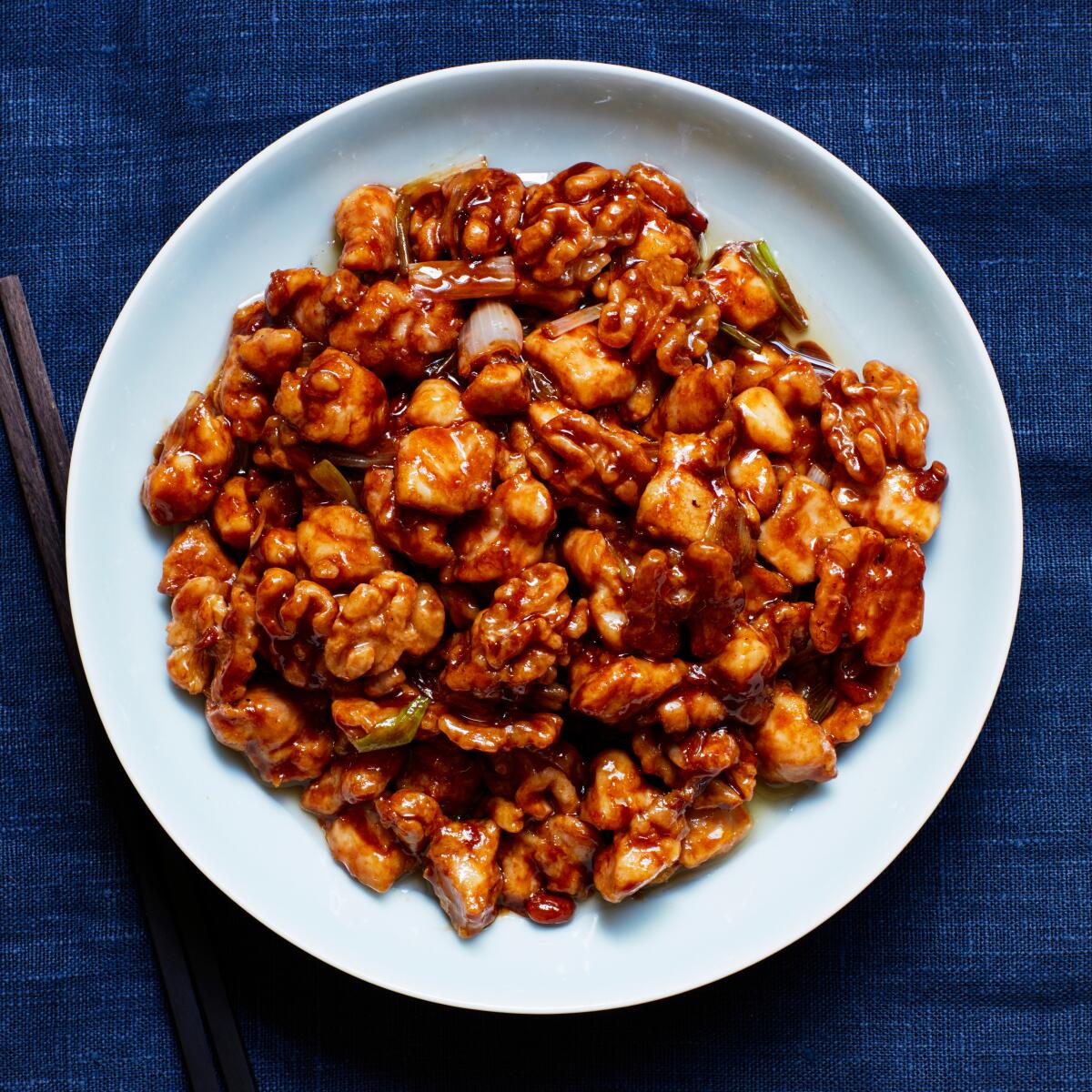
Ding continued to serve stir-fried chicken at his dinner parties after his career took him to the Sichuanese capital, Chengdu. In 1876 he was appointed governor-general of Sichuan, a post he held until his death 10 years later. While he was there, according to Jinan folklore, his personal chefs tailored it to local tastes by adding handfuls of dried chiles and Sichuan pepper and a pleasing chord of sugar and vinegar.
By the time Ding arrived in Chengdu, chiles were already firmly rooted in the local cuisine. Mapo tofu was invented in the late 19th century; a survey of Chengdu life and customs published in 1908 listed a number of spicy dishes that were part of the local culinary repertoire at the time, including chicken with chiles (lazi ji), numbing-and-hot sea cucumber and sour-and-hot squid (although the text makes no mention of kung pao chicken).
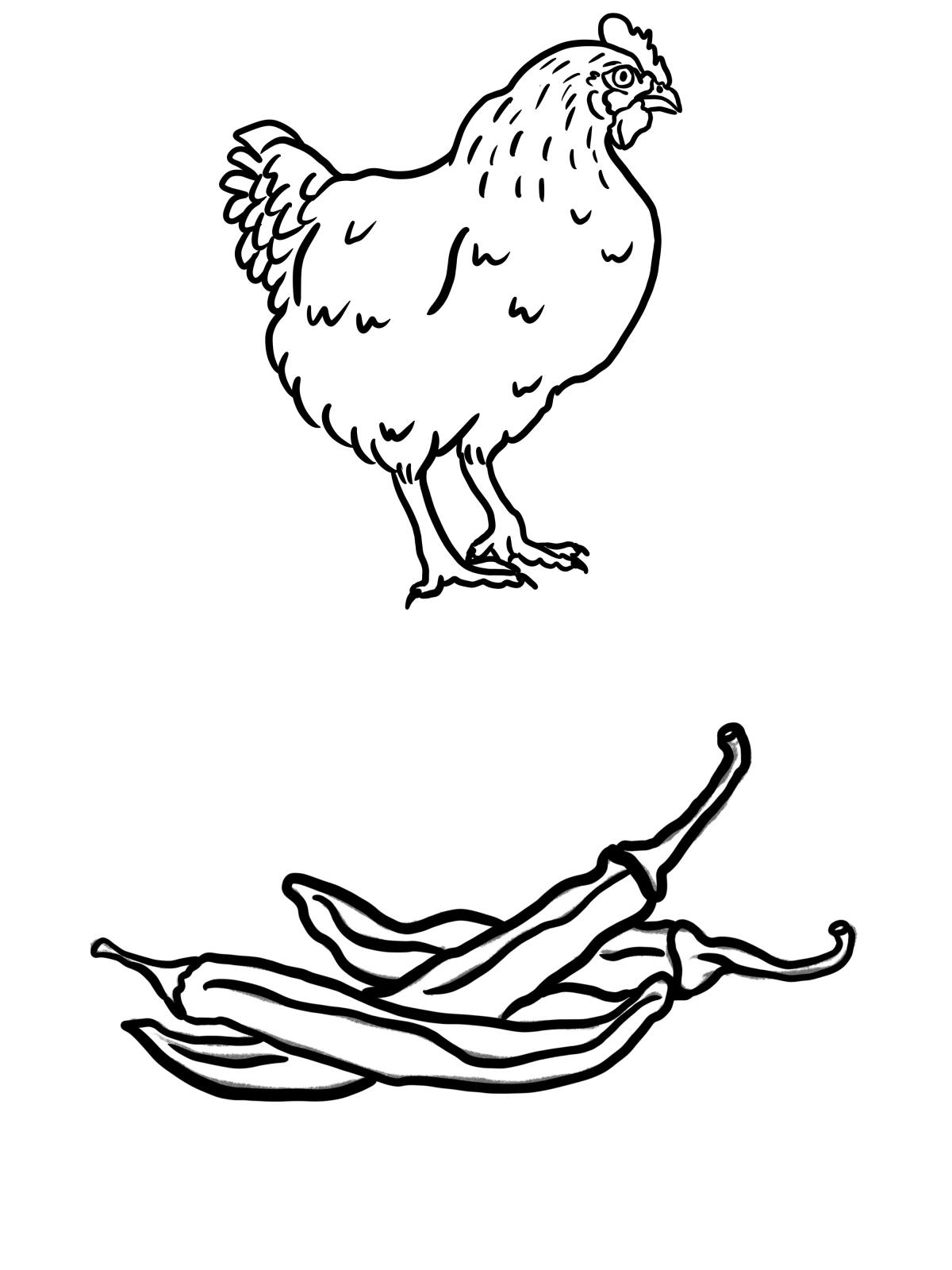
In today’s Chengdu, kung pao chicken is made by tossing cubes of breast meat in a hot wok with dried chiles, Sichuan peppercorns, white spring onion, ginger, garlic, crisp peanuts and a glossy sauce mixed to a particular degree of sweet-and-sour known as “lychee-flavored” because of its resemblance to the fruit. The layering of flavors and stimulating, but not overpowering, chile heat are typical of Chengdu cooking.
It’s not clear when the dish appeared on the local food scene. There is no kung pao chicken in the earliest official Sichuan cookbook, published in 1960 (although, curiously, the book includes “kung pao pig’s kidneys” made using exactly the same method). The dish was clearly established before the Cultural Revolution, because a cookbook published in 1972, at the height of the movement, includes the recipe as we know it today — although, because of the fanatical political correctness of the time, it is purged of association with an imperial bureaucrat and simply named “scorched chile chicken cubes (hula jiding),” with a discreet note mentioning it was “originally” known as “kung pao chicken.”
Ocean Star Restaurant on Atlantic Boulevard in Monterey Park opened its massive dining room in 1982.
In his 1937 novel “The Great Wave,” the acclaimed Chengdu writer Li Jieren mentioned Ding’s penchant for chicken and suggested his favorite recipe was an adaptation of a dish from his home province, Guizhou: “While he was in Sichuan … the Sichuan governor Ding Baozhen, a native of Guizhou, liked to eat the stir-fried chicken with chiles cooked by people in his hometown.” This, perhaps, is the best clue as to the true origins of the dish.
Ding grew up in rural Guizhou, in Zhijin county, formerly known as Pingyun. As a young scholar, he taught in an academy (which is now a Ding Baozhen museum, complete with an imposing statue of the man). The county town is sleepy and charming. During the chile season, carpets of bright scarlet chiles are laid out to dry on old stone bridges, while women nearby sell slabs of stinking tofu packed in rice straw.
Like the Sichuanese, the people of Guizhou famously adore spicy food, but their favorite chile preparation is unique to the region.
Sticky rice cake chile paste (ciba lajiao) is made by soaking dried chiles — a wrinkled local variety — in hot water, then pounding them with garlic and ginger: the stickiness of the paste explains its curious name. Ciba chiles are used in all kinds of Guizhou dishes, including the local version of kung pao chicken, which has a slightly different name from the Sichuanese dish: gongbao ji (kung pao chicken) rather than gongbao jiding (kung pao chicken cubes).
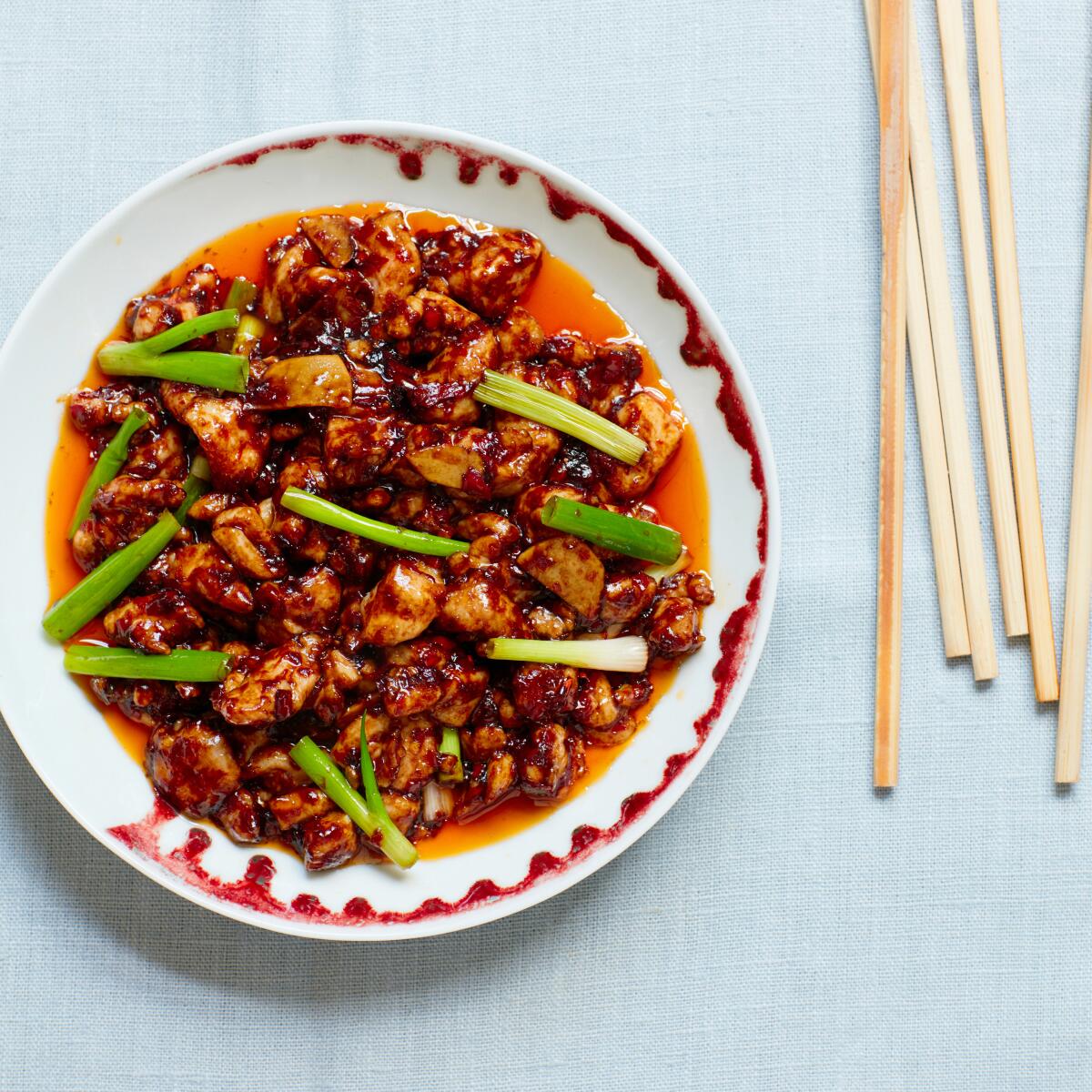
One afternoon, the leading local chef and prolific cookbook author Wu Maozhao took me out to taste it in Guiyang, the capital of Guizhou. We went to Wu Gong Bao, a restaurant named after a master of the art of cooking kung pao chicken (the late chef Wu Zuowen, who was the uncle of the restaurant’s current head chef).
After we’d tasted 15 other delicious dishes, the piece de resistance arrived: kung pao chicken, Guizhou-style — a pile of chicken chunks in a glossy scarlet sauce thick with ciba chiles. It was made with chicken leg meat rather than the typical Sichuanese breast and basked in a pool of red oil; there were no peanuts, dried chiles or Sichuan pepper to be seen.
The dish was gorgeously tasty, gently piquant rather than overpoweringly spicy, with just a hint of sourness.
“As you can taste,” said my host, Wu “our dish has a jiangla — spicy fermented sauce — flavor because of the use of sweet flour sauce and ciba chiles, so the overall effect is purer and less mixed than the Sichuan version.”
Although the nationwide and now global popularity of Sichuanese food has ensured that Chengdu gong bao chicken hogs the limelight, the people of Guizhou are crazy about their version of the dish, which is just one of a variety of gong bao dishes, all cooked with scarlet ciba chiles. At Wu Gong Bao, you can also eat gong bao pig’s stomach, gong bao shrimp, gong bao pork kidneys, gong bao pork liver, gong bao potatoes and gong bao rice jelly. In some parts of rural Guizhou, gong bao pork is an essential festive dish.
This version of mapo tofu from famed Chinese chef Yu Bo combines fiery, numbing spice with creamy avocado — yes, avocado.
After lunch, Wu and I leafed through his collection of vintage Guizhou cookbooks and talked about gong bao chicken. Wu is an accomplished chef in his 40s, sturdily built, with spiky, close-cropped hair, darting eyes and a lit cigarette always in his hand. The first time we met, he gave me a long, passionate, highly knowledgeable disquisition about the dish, waving his hands around for emphasis; afterward, he sent me gong bao chicken-related WeChat messages that kept pinging into my cellphone until after midnight.
Wu is convinced the real ancestor of kung pao chicken is a Guizhou folk dish, chicken with chiles, a hearty, rustic stew of chicken chunks cooked on the bone with ciba chiles and sweet flour sauce.
Later, he reckoned, Ding’s personal chefs would have refined the recipe to make it more suitable for the table of a high official.
“Of course Ding Baozhen didn’t cook the dish himself, but like all senior officials he had private chefs who followed him as he moved about the country,” Wu said.
“And although we don’t have any textual evidence of this, his home chef would certainly have pounded ciba chiles for his stir-fried chicken,” he continued. “So I think we can assume that the dish was originally based on Guizhou chicken with chiles, and acquired its name later because of Ding’s fame. As Ding traveled around China with his household and his personal chefs, first to Shandong and then to Sichuan, he would have eaten different versions of the dish, adapted to different circumstances.”
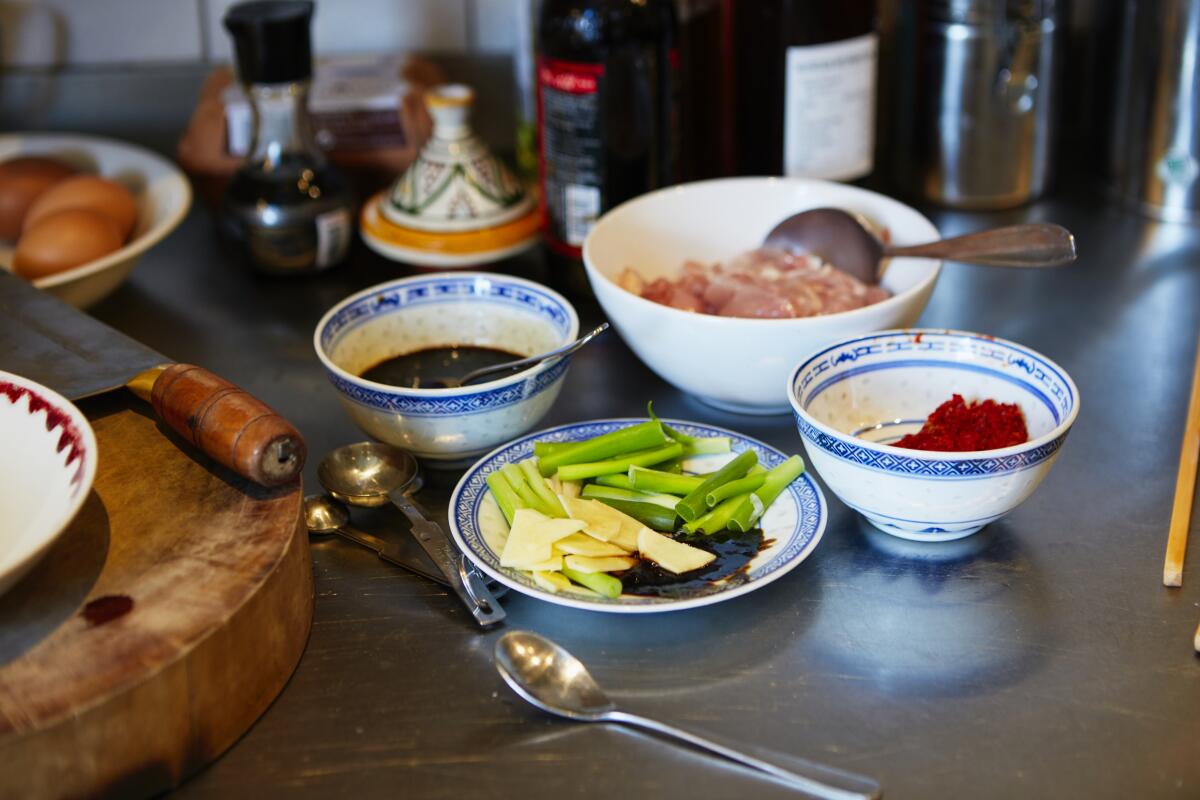
Ding certainly grew up in an era when the chile was conquering southwestern China: A recently published history of chiles in China suggests that people in Guizhou were using the spice a century before he was born. Was chicken with chiles the dish that evoked the flavor of home to Ding throughout his peripatetic life? Did his private chefs, while trying to please his palate, tone it down for local guests in Jinan, using fermented bean paste instead of sticky chiles? Did they give it a Sichuanese makeover in Chengdu, jazzing it up under the influence of Sichuan’s flavoring techniques?
What is certain is that any stir-fried chicken dish eaten by Ding during his time crushing peasant rebellions in Guizhou could not have been called kung pao chicken at the time — because Ding became known as Ding “Gong Bao” during his sojourn in Shandong, when he was given his honorary title. Perhaps the Sichuanese dish was given Ding’s name after the publication in 1937 of Li Jieren’s novel, which spread the tale of his liking for chicken.
Whatever the truth is, Ding’s name is now indelibly linked with the taste of stir-fried chicken, and the story of his culinary predilection has eclipsed all his achievements as one of the notable mandarins of the late 19th century. But while the early communists did their best to expunge him from the historical record, efforts are now afoot to restore his dignity, led by his descendants in Shandong and Guizhou.
In Guiyang, I met up with Ding Yingchun, one of Ding Baozhen’s distant cousins, a sharp, articulate man who recently retired from the construction business. We drank tea in a pavilion in his ornamental garden just outside the city. Afterward, Ding led me to the small shrine he built in Ding Baozhen’s honor, where he and his brother lit incense and kowtowed before a portrait of their illustrious ancestor.
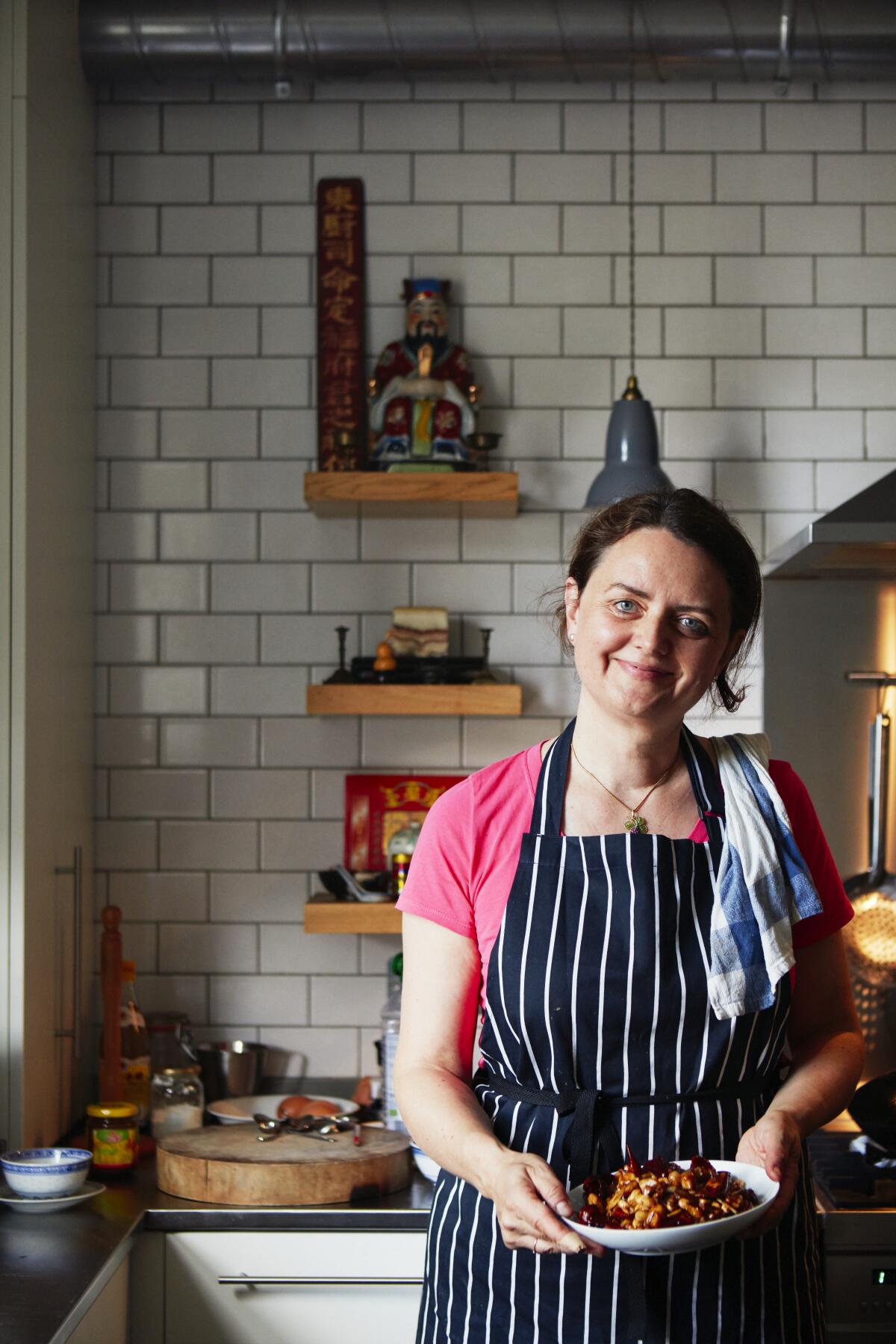
Members of the Ding family have their own story about Ding and his chicken. As a young boy, they say, Ding Baozhen saved a friend from drowning, and the friend’s parents thanked him with a dish of stir-fried chicken — a great luxury at the time. In adulthood, Ding could afford to eat chicken whenever he wanted, but he never forgot the taste of that delicious Guizhou dish.
According to Chinese tradition, men were mostly buried in their native places, but Ding Baozhen, having cut his ties with his home village, was granted an imperial dispensation to be buried in his adopted residence of Jinan. In June this year, construction workers there unearthed his family tomb, which had been ransacked by grave robbers in 1953 and then leveled by communists five years later. One of his descendants in Jinan, a sixth-generation scion, took the opportunity to salvage Ding Baozhen’s remains, and the family is trying to decide what to do with them.
Ding Yingchun is leading the Ding clan’s effort to rehabilitate Ding “Gong Bao” and hopes his remains will be returned to his native village in Guizhou. This year he began construction of a memorial temple in Niuchang, which he aims to complete in time for the 200th anniversary of Ding Baozhen’s birth next year.
In the meantime, the latter-day Dings have the satisfaction that their ancestor’s name seems destined to live forever as the godfather of one of the world’s favorite dishes.
More to Read
Eat your way across L.A.
Get our weekly Tasting Notes newsletter for reviews, news and more.
You may occasionally receive promotional content from the Los Angeles Times.
